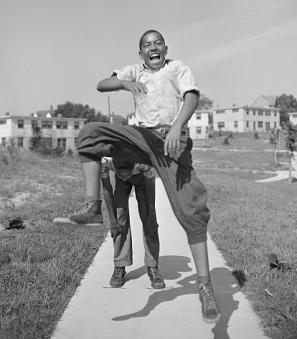"Jack the Slasher" Terrorizes Washington
In the winter months of 1893-1894, D.C. area folks were plagued with the fear of a mysterious man dubbed “Jack the Slasher.” Nicknamed after London’s infamous “Jack the Ripper” of 1888, this Jack silently entered homes at night and left just as stealthily as he came, leaving a violent mess behind him. Police were perplexed, women and children terrified, and men poured money into the protection of their houses. But before you start thinking the worst, know that he wasn’t that kind of slasher. Rather than human flesh, the target of his knife was textiles. He cut up furniture, clothing, carpets, and anything he could get his hands on, while taking little for himself. Why? Even after he was caught, no one was able to ascertain a real motive.
Jack’s robberies started in October 1893 at the home of Nick Young, President of the National Baseball League, in Mount Pleasant. He entered by cutting the slats of the shutters and sliding through a back window while the house was sleeping. Young woke to his residence in chaos: “the bric-a-brac and furniture therein [were] almost completely destroyed… The walls and pictures were besmeared with mud, while chairs and carpets were cut with a keen knife.”[1] When police were called to the scene of the crime, they were mystified, remarking they had never seen anything like it. And Jack was just beginning.
After his first break-in, he moved swiftly, often visiting multiple houses between 1 and 5 a.m. On the night of Oct. 28, he entered the home of Judge Miller in Takoma Park, where Mrs. Miller’s new clothing was slashed to bits and then thrown into the back yard. The woman was traumatized, and the Evening Star reported that many women “would perhaps take the chances of injury to themselves as readily as they would suffer their new dress and fall bonnet to fall under the burglar’s knife.”[2] The news of this attack spread like wildfire, and police all over the District were put on high alert. A few weeks into the slasher’s reign, the head of the D.C. Detective Force, L.H. Hollinberger, recommended that detectives patrol the street in civilian clothing so as not to arouse suspicion.[3]
By mid-November, Jack had visited neighborhoods from Fort Myer to Capitol Hill. So great was his reputation that he even started to inspire imitators who had old scores to settle. Angry servants slashed the homes of their employers and blamed their doings on the “indomitable housebreaker.”[4] Anonymous notes, some even threatening President Grover Cleveland, were left around the city. Many imitators were caught, but there was no evidence connecting any of them with multiple slashings.[5] And even as these criminals were jailed, the worst of the slashings continued.
Residents and police alike lived in fear, with no clue as to where the original Slasher would turn up next. One officer of the D.C. Metropolitan Police Force remarked how “he appeared and disappeared like a ghost.”[6] Others believed his work to be done by a trained monkey.[4] Most suspected he used chloroform as an anesthetic so as not to wake those whose belongings he terrorized.[6] But the fact remained that over a month after his first attack, the D.C. community was as befuddled as ever.
In the early morning hours of Nov. 22, policeman Charles B. Terry excitedly watched an African American man come out of an alley near 14th and U Streets and make his way down the road. Believing this man had no business being about at nearly 4 a.m., Terry yelled at him to stop. Not knowing that Terry was a policeman, as he was dressed in civilian clothing, the man picked up his pace. Terry became sure that he was the Slasher. He fired a shot, missing the man, who was now running. He shot once more, this time nailing him in the back. The man fell, crying out: “I ain’t done nothing boss, I was on my way to work.”[7] Terry had caught Willis Washington, a 19-year-old innocent man who was definitely not the Slasher. As Washington went to the hospital, where he would survive but remain paralyzed for life, Terry was arrested with charges of police brutality.[8]
Perhaps as a result of this unfortunate incident, the real Jack the Slasher laid low for the remainder of the year. By Nov. 27, most believed he had moved on. Washingtonians could breathe again. One man, Colonel Perry Carson, was especially relieved, saying: “It’s good for us colored folks. You see we were in a funny predicament… if we are doing something or going to work the policemen will shoot us.”[9] The fear that had grasped the city slowly dissipated, so that by the New Year things seemed back to normal.
But it turned out that Jack had just taken some time off for the holidays. On Jan. 22, he was back, this time attacking the home of Mrs. A. E. Wall, a prominent African American citizen in Capitol Hill. When she woke in the morning, “the first floor of the house looked as if a cyclone, and a very destructive one at that, had visited it during the night.”[10] The work was exactly like that of the Slasher, and police were convinced he had returned. The detective force was employed again, although this time dressed in uniform so as to avoid any further violent accidents. On March 19, they caught a man exiting the home of Judge Hunt in Tennallytown. In his pockets were razors, sharp knives, and small pieces of cloth and dress goods.[11] He had to be Jack.
The man turned out to be George Taylor, alias Jones, and he was clearly mentally unstable. When he was discovered in his burglary by a milkman, he did not attempt to get away but remained until the arrival of the officers; he did not even seem to realize that he was being arrested. At the station, “he acted absentmindedly and queerly,” weeping and pleading.[11] While he was unable to answer many questions in his hysteria, police found cloth and small valuables connecting him to previous crimes. They were certain that this was the man, and that no more slashings would occur.
Taylor later confessed, and his trial was held through late March and into early April of 1894. He was charged with 14 accounts of burglary, but only five were brought against him. Pleading not guilty, with a defense of insanity, he spent the majority of the trial “drawn together in the dock like a bundle of old clothes on a scarecrow, his face vacant, and his hands wandering nervously over the railing in front of him.”[12] While it was clear that he was not in his right mind, the question remained whether Taylor was sane enough to know right from wrong while performing the robberies. Many psychologists who had come to examine him during the trial concluded that he did, and on April 12, the jury found him guilty on three of the five charges.[13]
Taylor was sentenced to thirty years in the Albany, NY penitentiary. After the takeover of the District of Columbia’s jail by the United States Arsenal in 1862, the prison in Albany, known for housing the “vilest dregs of society,” became the place for D.C. convicts.[14]Having been one of the worst criminals D.C. had known in years, it was only natural that Jack the Slasher would be sent there. And as he made his way to Albany, ironically so did policeman Terry. Justice was brought down as Terry was convicted of assault and intent to kill Willis Washington. He was condemned to three years in prison, upon which hearing he “broke down and cried like a child.”[15]
Neither man remained in prison for their entire sentence. Terry was released after 28 months on good conduct and returned to the city in 1896.[16] Three years later, after serving five years, Taylor was admitted to the Government Hospital for the Insane, later known at St. Elizabeths, on July 28, 1899. His time in prison had only increased his mental instability, and upon arrival doctors declared him an imbecile. Unsure of who he was, and not even speaking a word until 1906, Taylor remained at the hospital until his death on Christmas Eve 1927.[17] He was buried in the hospital’s cemetery of forgotten men, as he had no living connections, and after only a few years his legacy was, indeed, forgotten.
For more on Jack the Slasher, check out the House History Man’s post. He includes a poem written in 1894 that well illustrates Jack’s infamy in Washington.
Footnotes
- ^ Sylvester, Richard, District of Columbia Police: A Retrospect of the Police Organizations of the Cities of Washington and Georgetown and the District of Columbia with Biographical Sketches, Illustrations and Historic Cases, Gibson Brothers: Washington, 1894.
- ^ “Still Hunting Him: The Furniture Slasher Remains as Great a Mystery as Ever,” Evening Star, 17 November 1893.
- ^ “Reign of Terror: Belief That the Vandal Slasher is Still at Large,” Evening Star, 20 November 1893.
- a, b Moore, William G. Report for the Year 1894. Metropolitan Police Department of the District of Columbia: Washington, 1894.
- ^ “Another Imitator: Jack the Slasher Seems to Impress Female Servants,” Evening Star,21 November 1893.
- a, b “Vandals at Work: The Mysterious Slasher Commits Another Characteristic Deed,”Evening Star, 16 November 1893.
- ^ “Will Probably Die: Young Willis Washington Mistaken For Slasher,” Evening Star, 22 November 1893.
- ^ “Condition Serious: Willis Washington, the Victim of Officer Terry’s Pistol,” Evening Star, 23 November 1893.
- ^ “Col. Carson Smiles,” Evening Star, 27 November 1893.
- ^ “Another Slasher Outrage: Either Jack or an Imitator at Work Again,” Evening Star, 22 January 1894.
- a, b “Police Confident: They Think They Have Captured the Original Slasher,” Evening Star, 20 March 1894.
- ^ “’Jack, the Slasher’ In Court: If Simulating Insanity He Gives a Remarkably Perfect Imitation,” The Washington Post, 7 April 1894.
- ^ “Slasher Was Guilty: The Jury Took No Stock in the Insanity Theory,” Evening Star, 12 April 1894.
- ^ Johnson, Carl, “The Albany Penitentiary,” All Over Albany, accessed 22 June 2015,http://alloveralbany.com/archive/2010/11/03/the-albany-penitentiary.
- ^ “Policeman Terry’s Punishment,” The Washington Post, 10 June 1894.
- ^ “Ex-Policeman Terry Returns,” The Washington Post, 18 November 1896.
- ^ “Case File for George Taylor, alias Jones,” St. Elizabeths Hospital, National Archives, accessed 19 June 2015.


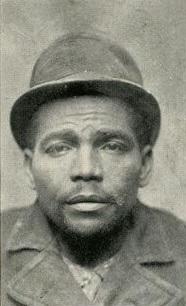
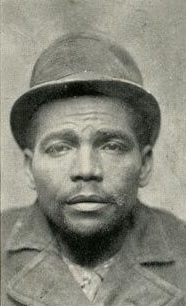
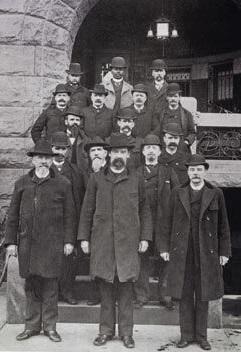
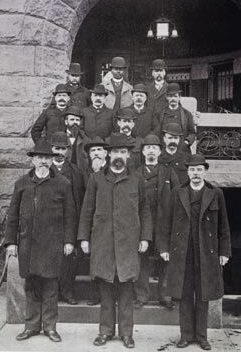
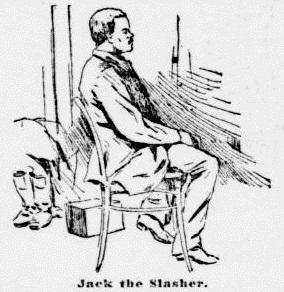
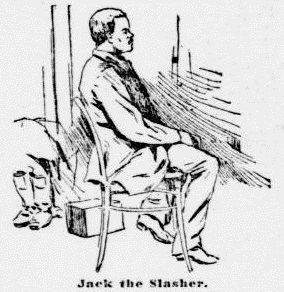
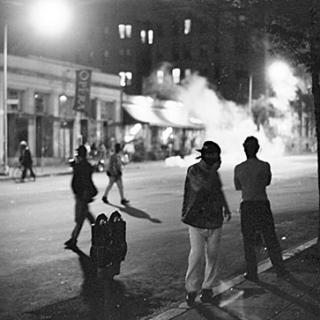
![“Washington D.C., Library of Congress 1897-1910.” (Photo Source: Library of Congress) Detroit Publishing Co., Copyright Claimant, and Publisher Detroit Publishing Co. Washington, D.C., Library of Congress. District of Columbia United States, Washington D.C, None. [Between 1897 and 1910] Photograph. https://www.loc.gov/item/2016796190/](/sites/default/files/styles/crop_320x320/public/4a28645v.jpg?itok=WxMtjKxx)

![Sketch of the mythical fuan by Pearson Scott Foresman. [Source: Wikipedia]](/sites/default/files/styles/crop_320x320/public/2023-10/Goatman_Wikipedia_Faun_2_%28PSF%29.png?h=64a074ff&itok=C9Qh-PE1)











